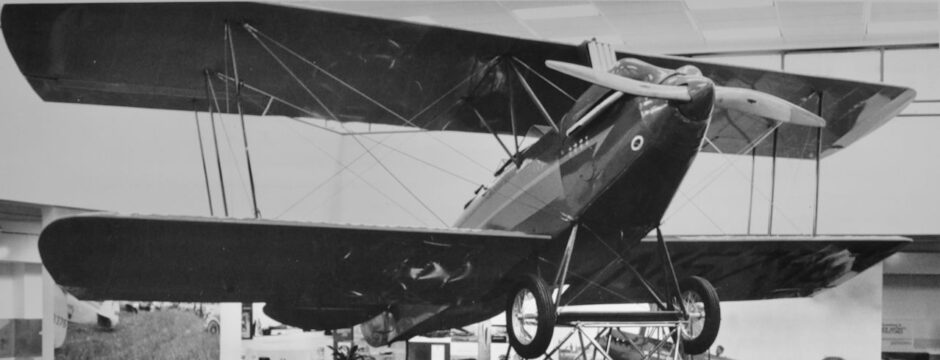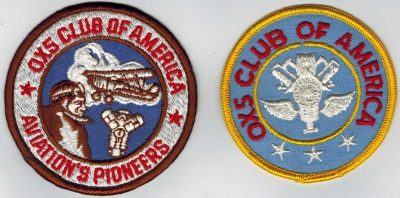George Vose’s Story
OX5 Past President ID #L13458
New flight instructor in 1943
In March 1941 George Chandler (his story was in the December 2013 newsletter) and I were in the same wartime predicament. All civilian flying had been grounded for 100 miles inland along both the Atlantic and Pacific coasts. George Chandler was in Massachusetts and I was in Maine, so Chandler moved to Texas and I moved to Pennsylvania to continue our flying. I chose State College, Pennsylvania, the location of Penn State University. I enrolled in the Civil Pilot Training private and commercial curriculums just as the CPT was changing its name to WTS – the CAA War Training Service. After private and commercial certification I enrolled in the CAA-approved flight instructor course. Jack Mullins, the chief pilot of the Air Force Contract School at Barnes Field in Westfield, Massachusetts, had promised me a flight instructor position as soon as I was rated.
In State College, the chief CPT instructor was Sherm Lutz and the aircraft used were Aeronca Defenders. In training, I flew every day. Under the tutelage of Sherm Lutz and Wayne Showers we did precision flying and lots of it. Chandelles, lazy eights, stalls, spins (over the top and underneath), slips, pylon eights and spot landings were all part of the day’s flying. In the World War II days it seemed that, for an instructor’s rating, precision flying was more important than the ability to instruct. Presumably that phase would be gained later from Army Air Force texts.
My performance was OK. I had practiced spins hundreds of times.
The next day, Saturday, was the real test. I was the last of the four applicants to fly with Bell, which increased my tenseness. Bell said nothing after each flight, but when all flights were finished he went into Sherm’s office and closed the door. We waited with bated breath for almost an hour until Sherm came out and said that all of us had passed. For the flight test I wore my good luck Scotch plaid necktie, the same tie I had worn for my previous flight tests. Bell signed my temporary flight instructor certificate, and It was good to have that paper in my hands only ninety days after receiving my private pilot certificate.
First aviation job with pay
Two days after receiving my certificate I left State College by Greyhound bus for Westfield, Massachusetts. It was an all night drive and the bus reached Westfield the next afternoon. The next morning, after an overnight stay in a third floor fire trap hotel room, Jack Mullins came by and we drove to Barnes Field about eight miles north of the city. It was a nice airport – far superior to the grass fields I had left behind in Center County, Pennsylvania. It had three paved runways, a nice brick and glass terminal building with a restaurant, offices for the FAA and the school, and classroom space. Adjacent hangars housed the Piper and Interstate trainers used in the program, and the maintenance shop.
Jack Mullins was the Operations Chief Pilot, but the Ground Manager, Steve Riggs, a previous Army P-26 pilot was really the person who kept the operations running. He viewed my new certificate and I was ready for a check ride with Jack. We used an Interstate trainer (military designation L-6) that I had never flown before. I was a nice airplane with ball bearing controls – another thing new to me.
Barnes Field, in western Massachusetts was only twenty miles north of the Connecticut border, and that is where my practice area would be. – across the state line in Connecticut. On the check we did a few basic flight maneuvers and then flew to the practice area, almost a 20-minute flight in a slow airplane. The distance would be an impediment when training flights were supposed to be limited to one-hour duration. The check flight was over and that afternoon I was assigned my first student.
The Flight Indoctrination Course had been designed to provide preliminary flight training to AAF cadets who had not attended college but were otherwise qualified for Air Force flying following six months of intensive training in selected colleges and universities. Our institution was the University of Massachusetts in nearby Amherst. The cadets traveled by bus daily to and from Barnes Field. Flight training for each cadet totaled ten hours and lasted for one month. Then a new group of trainees would arrive.
The training maneuvers were rigidly controlled. Each cadet, before starting any turn, was required to look in both directions, and state “All clear”. With 25 radio-less airplanes departing and arriving at about the same time, the traffic pattern procedures were precisely designed. I followed the procedures as directed, although some of the instructors ignored the directions and hurried their approaches in order to meet their next student. In one of my early flights I encountered a blinding snow squall while returning to the base. But after holding my heading for a while I was relieved to look down and see the runway directly below. My chief told me to make future returns immediately if a squall appeared – not an easy thing for me to do, having the most distant training area
New War Training Service instructor
Ferrying new airplane
After several months of routine flight instructing six days a week, sunrise to sunset, I was becoming pretty well “burned out” and welcomed the opportunity to travel by train to Houlton Army Air Field in northern Maine to pick up a new Piper L-4. Thor Solberg, the program contractor, called me to his office and assigned the delivery to me. He knew that I was from Maine and probably best qualified to bring the plane to Massachusetts. Solberg, an experienced pilot who moved from Norway to the United States prior to Hitler’s invasion, and who earlier had pioneered an amphibian route from New York to Oslo, had over estimated my cross country ability. At that time I had only limited cross country experience, but I grabbed the opportunity. With strong winds and military refueling impediments at Dow Field in Bangor and at Brunswick Navy Base, it took three days to fly 300 miles. I had become a fairly good cross-country pilot during the flight, and the new L-4 was assigned to me for instructing. But the assignment was short-lived – a week later the chief pilot took my new plane and I had to go back to NC32416.
AAF Cadet Paul Brown 3257492
(One of my 68)
Air Force Reserve to the Army Air Force
By March of 1944 World War II was well underway. With victory now in sight, military flight training began to taper off. The WTS program would soon be ended. As a civilian flight instructor for an Army Air Force Contract School, I had not yet fulfilled my WWII military obligation. I still wanted to fly in the Air Force and I hoped it would be possible. By “voluntary induction” I was soon in the 4th Air Force. As expected, pilot training had ceased. With my name tag identification “PVT George Vose FFI”. (“FFI” designating “former flight instructor”), I was assigned the MOS of Instructor Fixed Gunnery and was trained to teach P-51 pilots how to shoot down other airplanes. But a short time before the planned invasion of the Japanese mainland, in the wee morning hours of August 6, 1945, the CQ ran through the barracks shouting, “Wake up! The war’s over”. The Atom Bomb had been dropped on Hiroshima.


